Last updated on
Discover the simple steps to mend a tear in your couch and revive its appearance in no time.
A rip in your couch can be a frustrating and unsightly problem, but don’t worry, it’s not the end of the world! Whether it’s from an accidental spill or a playful pet, there are ways to fix that tear and restore your beloved couch back to its former glory. In this article, we’ll guide you through some easy steps to repair a rip in your couch without breaking the bank.
So grab your tools and let’s get started!
Table of Contents
Assess the Damage

The first step in repairing a rip in your couch is to assess the damage. Take a close look at the tear and determine its size, location, and severity.
If it’s just a small rip on an inconspicuous part of your couch, you may be able to fix it yourself with some basic supplies. However, if the tear is large or located on a highly visible area of your couch like the armrest or seat cushion, you may need professional help.
It’s also important to consider what type of material your couch is made from before attempting any repairs. Leather sofas require different repair techniques than fabric ones do; so make sure that you know what kind of upholstery material you’re dealing with before proceeding.
Assessing the damage will give you an idea about how much time and effort will be required for fixing it as well as whether DIY methods are suitable for this particular case or not.
Gather Repair Supplies

Depending on the size and location of the rip, you may need different tools and materials. Here are some essential items that will come in handy:
- Scissors
- Needle-nose pliers
- Thread (matching color)
- Sewing needle or curved upholstery needle
- Fabric glue or leather repair kit (if applicable)
- Patch material (optional)
Make sure to choose high-quality thread that matches your couch’s fabric color as closely as possible. If you’re unsure about which type of thread is best suited for your needs, consult with a professional at a local craft store.
If you’re dealing with a tear in leather furniture, consider investing in a specialized leather repair kit instead of using regular fabric glue or patch material.
Choose the Right Thread

The type of thread you use will determine how strong and durable the repair will be. For example, if you’re working with leather or vinyl upholstery, it’s best to use a heavy-duty nylon or polyester thread that can withstand wear and tear.
On the other hand, if you’re mending fabric upholstery such as cotton or linen blends, choose a lighter weight cotton-polyester blend for sewing purposes. This type of thread is less likely to break under tension while still providing enough strength for everyday use.
It’s also important to match the color of your existing upholstery as closely as possible when selecting your repair threads so that any visible stitching blends seamlessly into its surroundings.
Prepare the Couch Surface
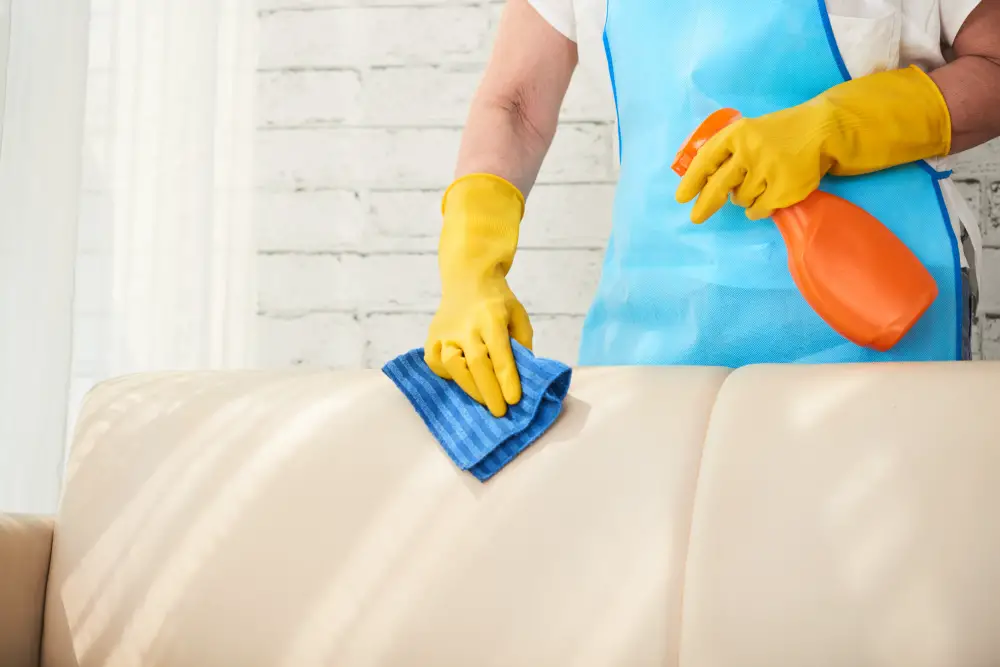
This step is crucial as it ensures that the repair work will be long-lasting and effective. Begin by cleaning the area around and inside of the tear with a soft cloth or brush to remove any dirt, dust, or debris that may have accumulated over time.
Next, use a pair of scissors to trim any loose threads or frayed edges around the tear carefully. Be sure not to cut too close as this can cause further damage.
If your couch has leather upholstery, gently sand down any rough edges using fine-grit sandpaper until they are smooth and even with surrounding areas.
Wipe down both sides of torn fabric using rubbing alcohol on cotton balls; this helps remove oils from skin contact which could interfere with adhesion when gluing patches onto tears later on during repairs process.
Sewing Vs. Patching
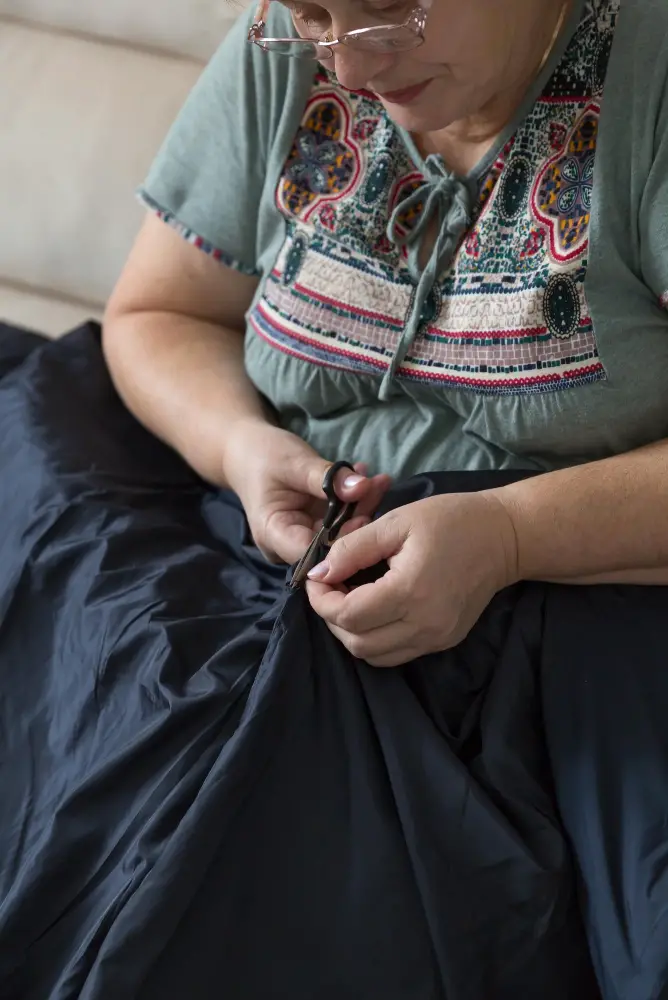
Sewing involves using a needle and thread to stitch the torn edges back together, while patching involves covering the tear with a piece of fabric or leather.
Sewing is often the preferred method for repairing smaller rips as it provides a more seamless finish. However, if the tear is too large or in an awkward position, sewing may not be possible.
In this case, patching can be used instead.
Patching can also offer more design options as you can choose from different fabrics and colors to match your existing upholstery. It’s important to note that when choosing fabric for patches make sure they are durable enough for furniture use.
Leather Repair Kits
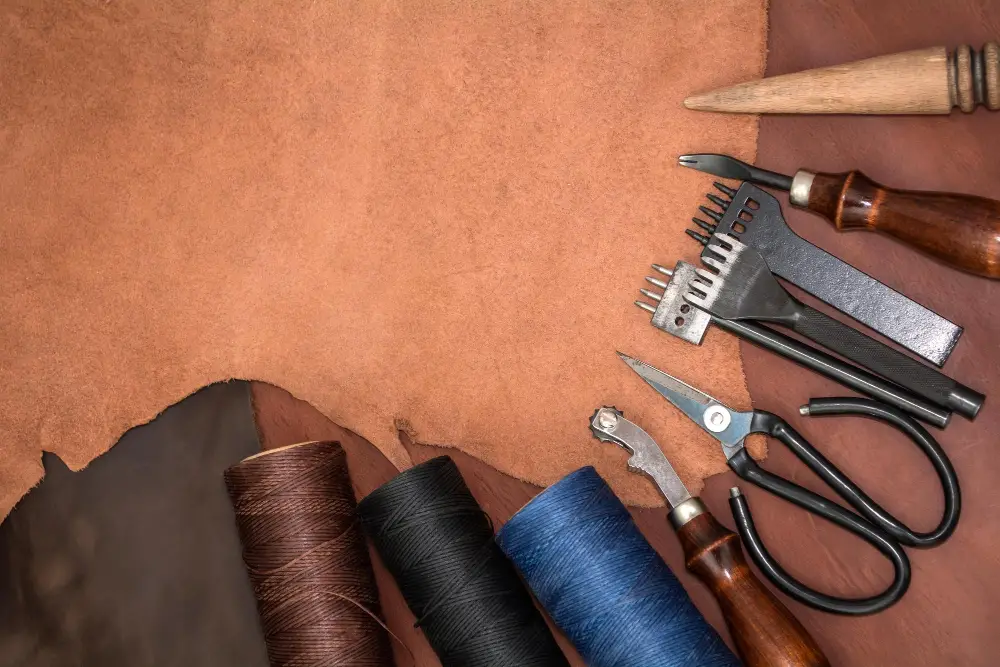
These kits are designed specifically for repairing rips and tears in leather furniture. They come with everything you need to fix the damage, including patches of matching color and texture.
To use a leather repair kit, start by cleaning the area around the tear with rubbing alcohol or another mild cleaner. Then apply adhesive from the kit onto one side of the patch and press it firmly onto the damaged area.
Once applied, allow time for drying before smoothing out any wrinkles or bubbles that may have formed during application. If necessary repeat this process until all areas are covered evenly without any bumps or creases.
Mending With Fabric Glue
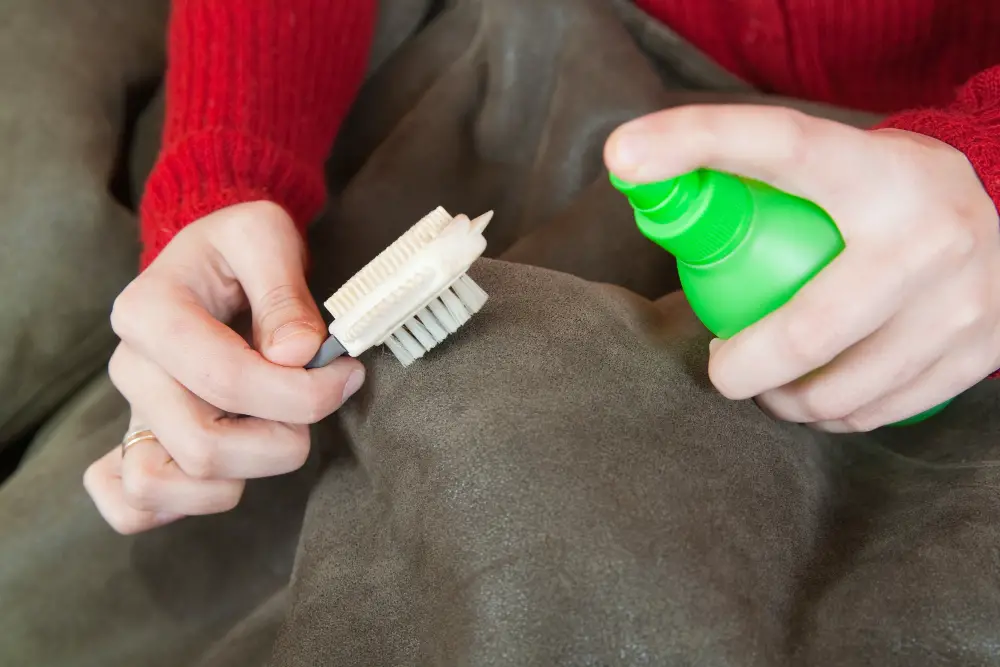
It’s easy to use and dries quickly. However, it’s important to note that fabric glue may not hold up as well over time compared to sewing.
To mend with fabric glue:
- Clean the area around the tear.
- Apply a thin layer of fabric glue on one side of the tear.
- Press both sides together and hold for several minutes until dry.
- Repeat on other side if necessary.
Fabric glues come in different types such as washable or permanent adhesives so make sure you choose one that suits your needs best.
While mending with fabric glue may seem like an easy fix, keep in mind that it might only be temporary and could require reapplication down the line depending on how often you use your couch.
Sewing Techniques
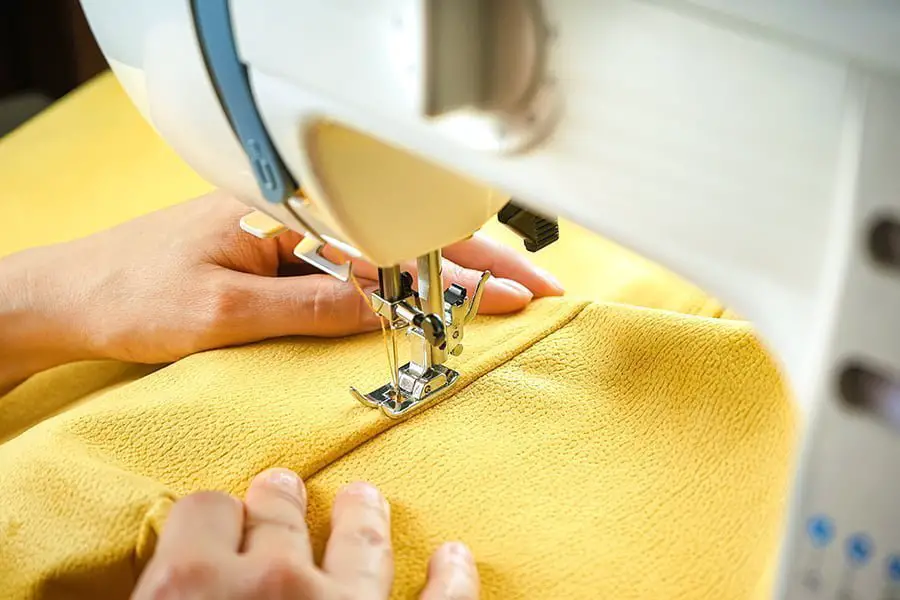
Sewing is a great option for repairing small tears in fabric couches. To begin, thread your needle with a matching thread color and knot the end of the thread.
Next, insert your needle through one side of the tear from underneath so that it comes out on top. Pull until there is only a small tail left on one side of the rip.
Then insert your needle into other side of tear from underneath so that it comes out on top again. Pull tight enough to bring both sides together but not too tight as this can cause puckering or further tearing.
Continue stitching back and forth across the rip until you reach its end point then tie off by making several knots at once before cutting excess threads close to knotting points using scissors or snips.
Patching Techniques
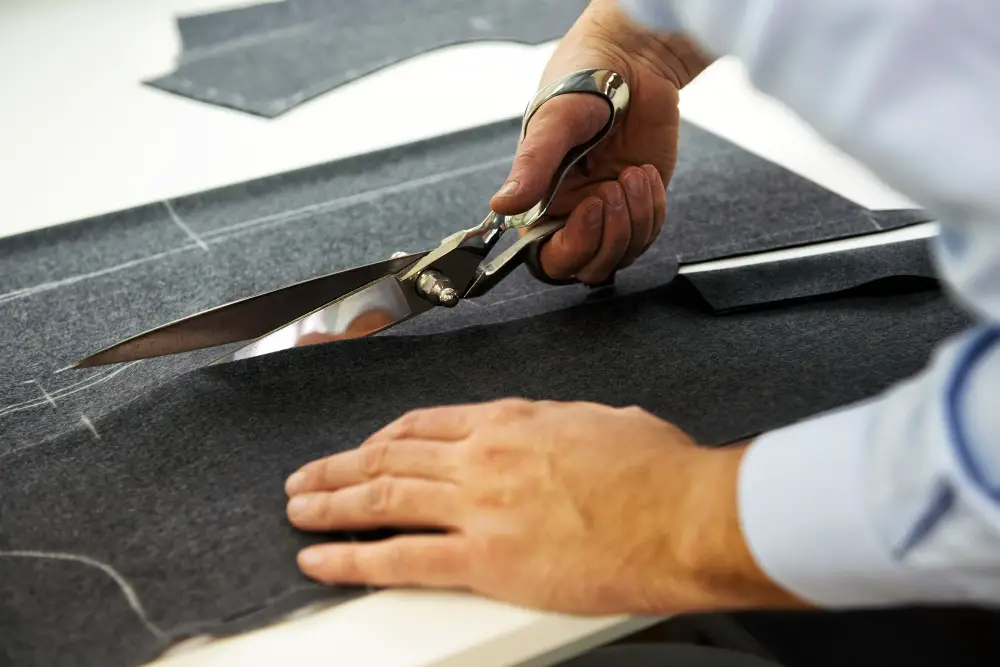
Patching involves covering the tear with a piece of fabric that matches or complements your couch’s upholstery. To begin, cut out a piece of fabric that is slightly larger than the tear and place it over the damaged area.
Next, apply some fabric glue around the edges of both sides of your torn upholstery and press them together firmly. Make sure you smooth out any wrinkles or bubbles before allowing it to dry completely.
Alternatively, you can use an iron-on patch for quick and easy repairs. These patches come in various colors and textures so you can find one that blends seamlessly with your furniture’s original design.
Remember to choose high-quality materials when patching up rips on leather sofas as they require special care compared to other fabrics like cotton or polyester blends.
Upholstery Replacement

This option can be more expensive than repairing a small tear, but it’s worth considering if your couch has seen better days. Upholstery replacement involves removing the damaged fabric and replacing it with new material.
To start this process, you’ll need to find a reputable upholsterer who can help guide you through selecting new fabric and provide an estimate for the work involved. Keep in mind that some fabrics are more durable than others and may last longer over time.
Once you’ve selected your new fabric, the upholsterer will remove all of the old upholstery from your couch frame before attaching fresh padding as needed. Then they will cut out pieces of fabric based on measurements taken from each section of your sofa before sewing them together into one cohesive piece that fits perfectly onto its frame.
Cleaning the Area
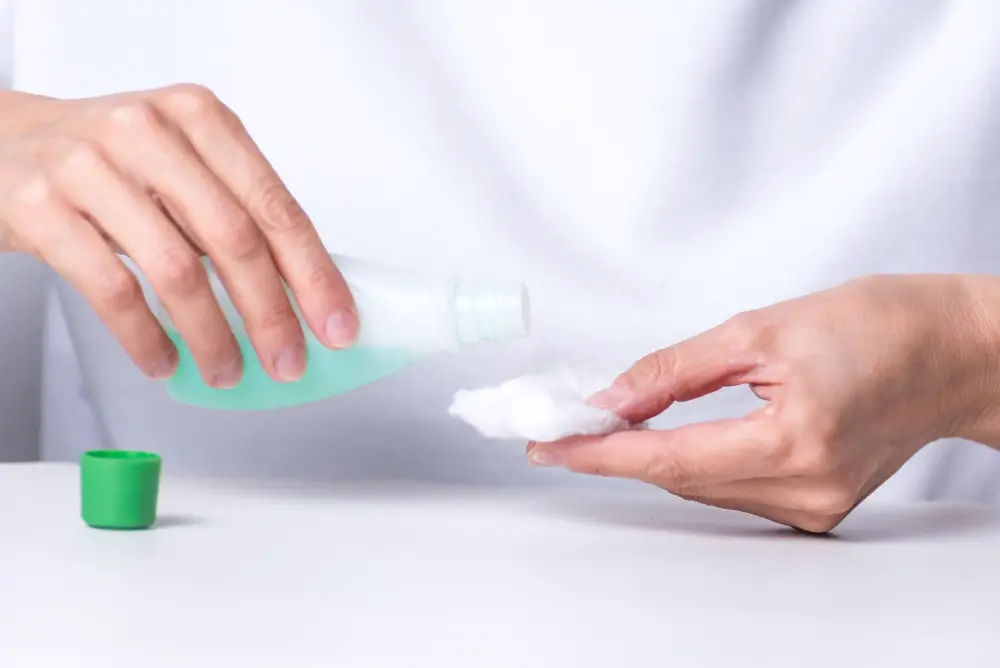
This step is crucial because any dirt or debris can interfere with a successful repair. Use a soft-bristled brush or vacuum cleaner to remove any loose particles from both sides of the tear.
Next, use rubbing alcohol on a cotton ball or cloth to clean around and inside of the tear. This will help remove any oils that may prevent adhesive from sticking properly.
If you’re dealing with leather upholstery, be sure to use only products specifically designed for leather cleaning as other cleaners can cause further damage.
Leather Patch Options
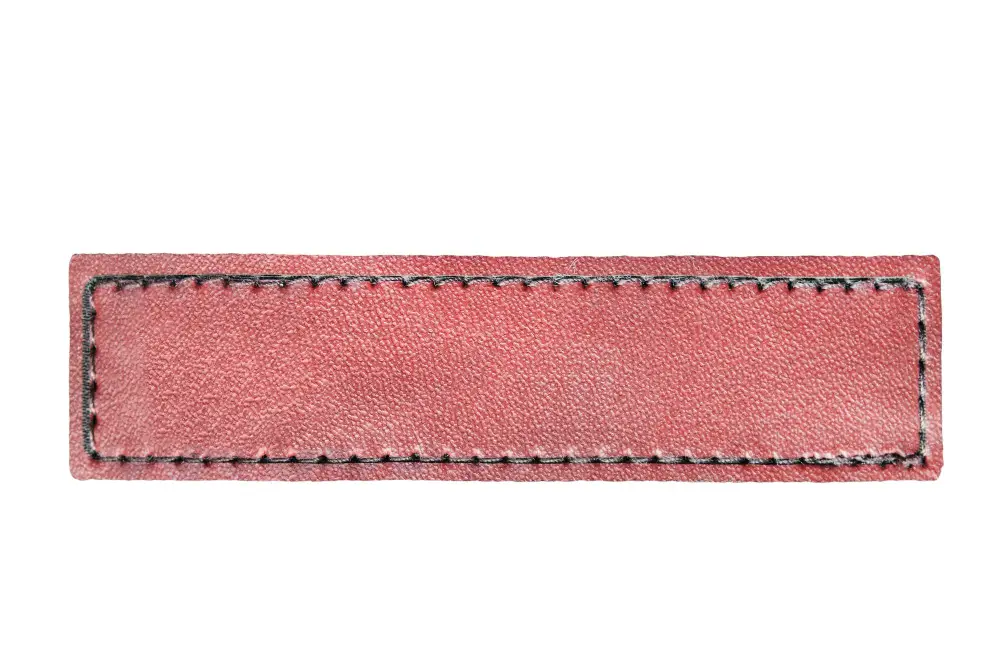
If your leather couch has suffered a rip, you may be wondering what options are available to fix it. One option is to use a leather patch.
When choosing a leather patch, make sure it matches the color and texture of your couch as closely as possible. You can find pre-cut patches at most craft stores or online retailers, or you can cut one yourself from an inconspicuous area of the furniture.
To apply the patch, clean the area around the tear with rubbing alcohol and allow it to dry completely before proceeding. Apply adhesive according to manufacturer instructions on both sides of the tear before placing your chosen patch over top.
Press firmly on all edges until they adhere securely together then let dry overnight before using again.
Adhesive Application
Before applying any adhesive, make sure that the area around the tear is clean and dry. You can use a damp cloth to wipe away any dirt or debris.
Next, apply a small amount of adhesive onto one side of the tear using an applicator brush or toothpick. Be careful not to use too much glue as this can cause discoloration and stiffness in your couch fabric.
After applying glue on one side of the rip, gently press both sides together and hold them firmly for several minutes until they bond together properly. Use clamps if necessary but be careful not to damage other parts of your couch while doing so.
Allow enough time for drying before sitting on or using that part again; follow manufacturer instructions regarding drying times as different adhesives may require different amounts of time before they are fully cured.
Pressing and Smoothing
This step is crucial in ensuring that your repair job looks neat and seamless. Use a warm iron on low heat setting to press down on the repaired area gently.
Be careful not to apply too much pressure as this can damage delicate fabrics or cause adhesive patches to come off.
If you are repairing leather, use a soft cloth instead of an iron and rub gently over the patch until it adheres properly. Once done, allow ample time for everything to dry completely before using your couch again.
Choosing Fabric Patch
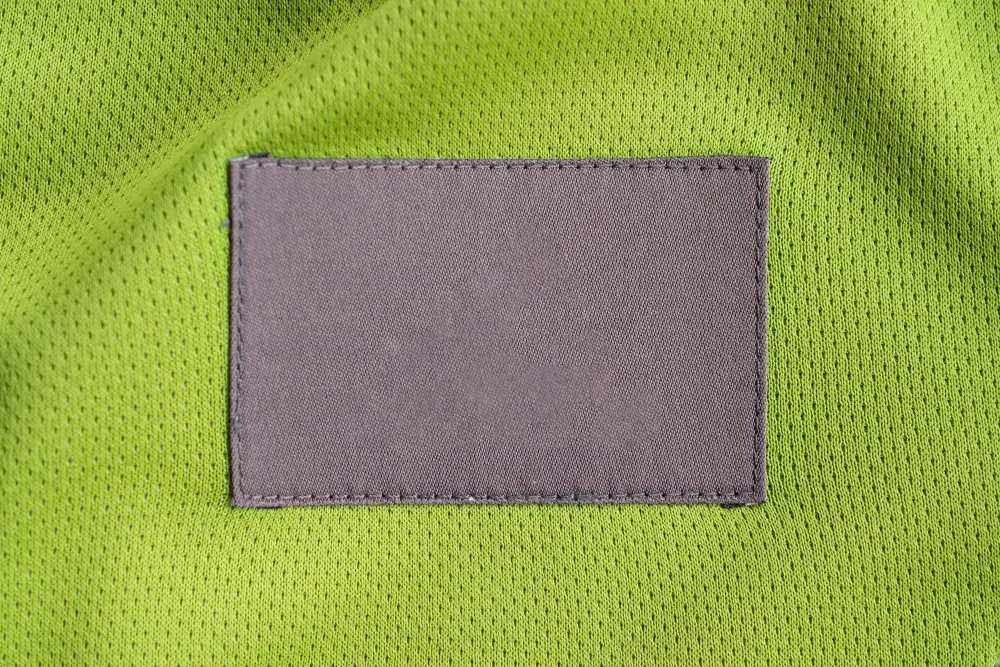
First, you’ll want to select a patch that matches the color and texture of your couch as closely as possible. This will help ensure that the repair is not noticeable once complete.
Next, consider the type of fabric used in your couch upholstery. If it’s made from natural fibers like cotton or linen, choose a similar material for your patch.
Synthetic fabrics like polyester or nylon can be more difficult to match but can still work if chosen carefully.
Make sure you have enough fabric for the job at hand – measure out how much you’ll need before making any purchases.
Securing the Edges

This will help prevent further damage and ensure that your fix lasts as long as possible. One way to do this is by using fabric glue along the edges of your patch or seam.
Simply apply a small amount of glue along each edge and press firmly into place with a clean cloth.
Another option is to use an adhesive tape specifically designed for upholstery repairs, which can be found at most craft stores or online retailers. These tapes are easy to apply and provide a strong hold that will keep your repair in place.
If you’ve opted for sewing instead, make sure you knot off any loose threads on both ends securely before trimming them close enough so they don’t get caught on anything while in use.
Using a Repair Kit
Repair kits come with everything you need to fix a tear in your couch quickly and easily. They typically include patches of fabric that can be cut to size and adhesive glue that bonds the patch securely onto the torn area.
To use a repair kit, start by cleaning any dirt or debris from around the tear using soap and water. Then dry it thoroughly before applying adhesive glue on both sides of the rip.
Next, place one side of your patch over one half of where it’s ripped while pressing down firmly so there are no air bubbles trapped underneath.
Once this is done, repeat on other side until both halves have been patched up completely! It’s important not to sit on or use your couch for at least 24 hours after repairing with an adhesive as this will give enough time for it all set properly.
Post-repair Care

First and foremost, avoid sitting on or using the repaired area for at least 24 hours after completing the repair. This will give any adhesives or stitching time to fully set and dry.
If you used a patching technique, make sure that all edges are securely fastened down with fabric glue or stitching. Loose edges can catch on clothing or other objects and cause further damage.
Regularly clean your couch with a soft brush attachment on your vacuum cleaner to remove dust and debris from accumulating around the repaired area. Avoid using harsh chemicals when cleaning near where you made repairs since they may weaken adhesives over time.
Lastly, be mindful of how much weight is placed on areas of high stress such as armrests so that rips don’t occur again in those same spots.
Preventing Further Rips

One of the easiest ways is by placing a protective cover over your couch. This can be as simple as using a throw blanket or purchasing a slipcover that fits snugly over the entire piece of furniture.
Another way to prevent further damage is by keeping pets off the couch or training them not to scratch at it. You can also avoid eating and drinking on the sofa, which will reduce spills and stains that could lead to tears.
Make sure you regularly clean and condition leather sofas with appropriate products so they remain supple and less prone to cracking or tearing.
Professional Repair Services

A furniture repair specialist can assess the damage and provide an estimate for repairing or replacing the affected area. They have access to specialized tools and materials that are not readily available at home improvement stores, which means they can often achieve better results than a DIY approach.
Professional repair services also offer warranties on their workmanship, giving you peace of mind knowing that any issues will be addressed promptly without additional cost. Some companies offer pickup and delivery services so you don’t have to worry about transporting your couch back and forth.
While professional repairs may come with a higher price tag than doing it yourself, they are often worth it in terms of quality and longevity. So if you’re unsure about tackling this project solo or want guaranteed results from an expert touch – consider reaching out for help!
FAQ
How can I hide a tear in my couch?
To hide a tear in your couch, use cushions as they are an easy and cost-effective way to cover tears, especially if located towards the middle or back of the sofa.
Can you sew a rip in a couch?
Yes, a rip in a couch can be easily fixed using a strong nylon thread and a curved needle, along with some care and the appropriate tools.
Can you repair a hole in a couch?
Yes, you can repair a hole in a couch by using either iron-on or self-adhesive fabric patches that closely match the couch’s material color.
What are the best materials to patch a rip in a couch?
The best materials to patch a rip in a couch include fabric patches, upholstery fabric adhesive, thread, and sewing needle.
Are there any professional services available for repairing couch tears?
Yes, professional services like upholstery repair shops are available for repairing couch tears.
How can I prevent future rips or tears on my couch?
To prevent future rips or tears on your couch, regularly maintain the upholstery by cleaning, using covers, and avoiding sharp objects or excessive weight on the fabric.




